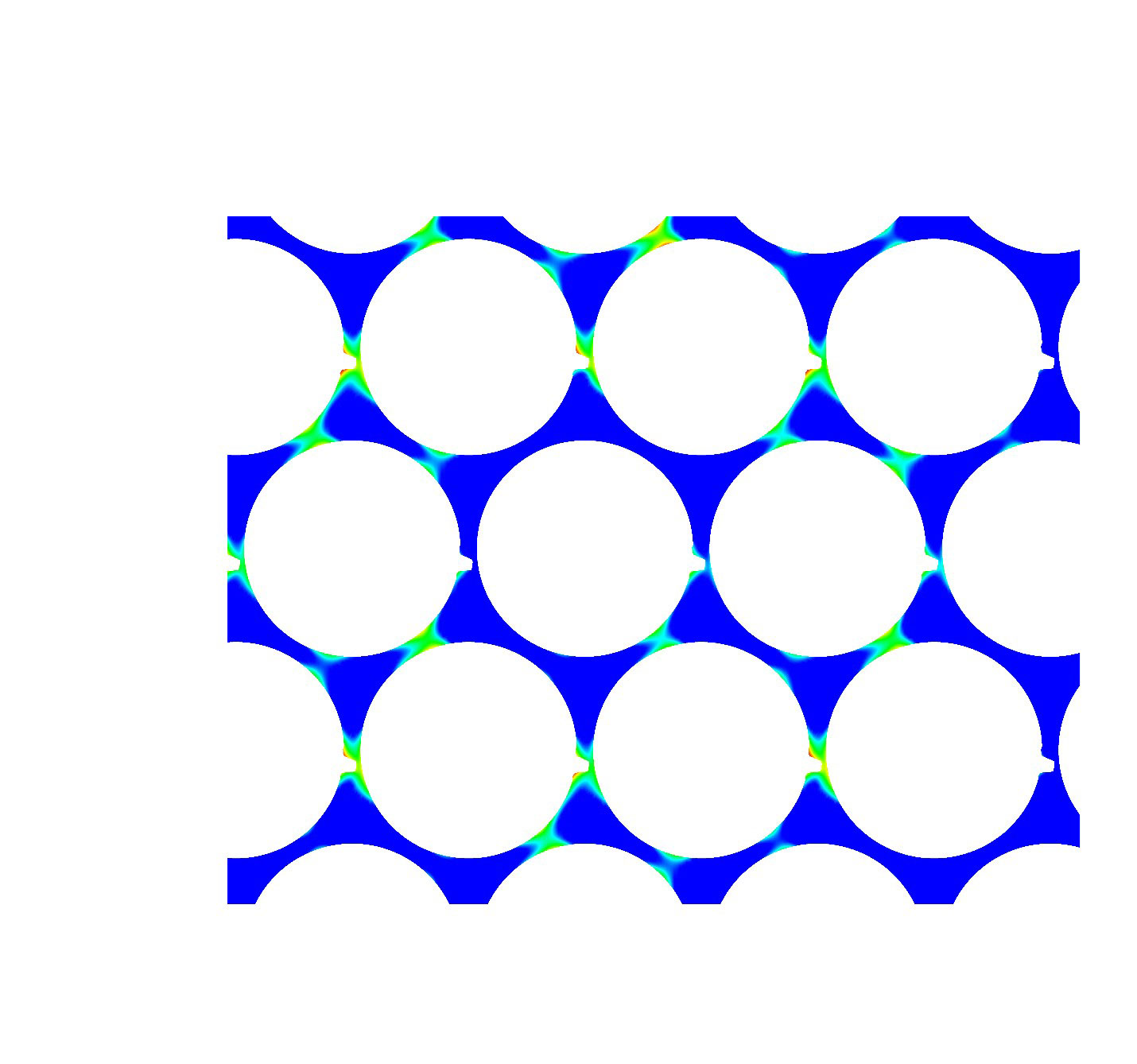High-Fidelity Multiphysics Simulations to Improve Nuclear Reactor Safety and Economics
Engineers can model heat distribution in reactor designs with fewer or no approximations.

The Science
Nuclear reactors must be designed to ensure materials aren’t overheated. Historically, researchers used crude geometry models and expensive mockup experiments. They had to build in conservatism. Now, a team has devised a high-fidelity approach. With high-fidelity solvers, they can assess the heat distribution in a nuclear reactor design with fewer or no modeling approximations.
The Impact
This project shows high-fidelity modeling capabilities that can improve the economics and safety of advanced fast reactor designs. Specifically, reactors can be designed and operated safely at higher power levels. This leads to economic gains. This work supports the Department of Energy’s (DOE’s) mission. Specifically, the work facilitates commercial deployment of reactors as a clean and sustainable energy source.
Summary
Researchers estimated hot channel factors (HCFs) with the high-fidelity Simulation-based High-efficiency Advanced Reactor Prototyping (SHARP) toolkit by modeling pin-by-pin nuclear fuel assemblies subjected to various uncertainties (wire wrap vs. bare bundle, fuel fissile content maldistribution, cladding thickness manufacturing uncertainty, and uncertainties in thermo-physical properties). As part of this research, they used the Mira supercomputer at the Argonne Leadership Computing Facility, a DOE Office of Science user facility. Staff at the facility helped optimize the study to run on the supercomputer. With data from Mira, the team compared the new HCFs to legacy HCFs evaluated for a sodium-cooled fast reactor, EBR-II, and showed reductions in every case. The legacy HCFs have built-in conservatism due to their crude geometry models and approximate physics modeling. By removing this conservatism with high-fidelity models, engineers can design and operate reactors safely at higher power levels, leading to economic gains.
Contact
Emily R. Shemon
Argonne National Laboratory
[email protected]; (630) 252-4477
Funding
The Department of Energy (DOE), Office of Nuclear Energy, Nuclear Energy Advanced Modeling and Simulation program funded this research. The team used resources at the Argonne Leadership Computing Facility, which is a DOE Office of Science user facility, and Blues, a high-performance computing cluster operated by the Laboratory Computing Resource Center at Argonne National Laboratory.
Publications
E.R. Shemon, Y. Yu, and T.K. Kim, Applications of SHARP Toolkit to SFR Challenging Problems: Evaluation of Hot Channel Factors and Demonstration of Zooming Capability. Argonne Technical Report ANL/NSE-18/4, Argonne National Laboratory, Lemont, Illinois (2018). [DOI: 10.2172/1483839]
Highlight Categories
Program: ASCR
Performer: DOE Laboratory , SC User Facilities , ASCR User Facilities , ALCF
Additional: Collaborations , NE




